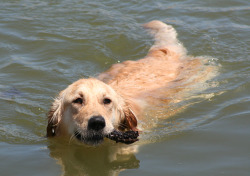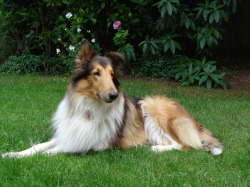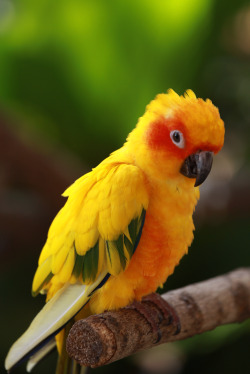|
|
Choosing A Pet
Choosing a pet will prompt all sorts of questions, but you’ve already answered the most important one – the “why” question. It could be for any number of reasons – companionship, a new or renewed sense of purpose, some unconditional love, a walk mate or just another friend that’s always  there with 100% approval and 0% criticism. Other reasons could include getting out for regular exercise or even protection; if that’s the case, it’s all the more important to make the right choice. there with 100% approval and 0% criticism. Other reasons could include getting out for regular exercise or even protection; if that’s the case, it’s all the more important to make the right choice. In some respects, choosing a pet means we’re ready for yet another kind of relationship. It’s certainly not without challenges, but it is easier than internet dat- ing! We just need to ask the right questions and look in the right places – hmmm, maybe it’s a lot like internet dating!  When choosing a pet, just make sure not to make the cosmetic “love at first sight” mistake. After all, every puppy, kitten, bird and rabbit are cute and cuddly at first, but how long does that last? Our relationship ex- perience tells us we need one that “wears well”! When choosing a pet, just make sure not to make the cosmetic “love at first sight” mistake. After all, every puppy, kitten, bird and rabbit are cute and cuddly at first, but how long does that last? Our relationship ex- perience tells us we need one that “wears well”!
Choosing A Pet – The “How Much” Questions
When choosing a pet, there is no absolute hands down winner that’s perfect for anyone and everyone. Only you can decide what makes the best fit with your needs, lifestyle and preferences. How each of us would answer the following questions will be just as different as the pets we choose.
- Choosing a pet - How much tolerance do I have?
Pets are messy and noisy to varying degrees, but all of them will produce waste and outside of a fish tank will shed pet hair (or feathers or dander) and cause some wear and tear on home  fur- nishings and/or the yard. Dogs like to dig (and bark), cats like to sharpen nails, ferrets like to explore mischie- vously and birds like to flap. If our tolerance levels are low in these areas, a pet that’s happily confined to a cage (or a glass tank) is prob- ably a better choice. fur- nishings and/or the yard. Dogs like to dig (and bark), cats like to sharpen nails, ferrets like to explore mischie- vously and birds like to flap. If our tolerance levels are low in these areas, a pet that’s happily confined to a cage (or a glass tank) is prob- ably a better choice.
Being the loyal and social creatures that they are, dogs are happiest when they live inside with people, rather than being banished to the yard or chained outside. - Choosing a pet - How much interaction do I want?
 Do I want to play (or walk or run) with my pet, or do I simply want to watch it in its cage or tank, or on my lap? Most dogs cherish a walk or run outdoors and will tell you so, cats are mostly sedentary with sporadic energy bursts, hamsters, rabbits and guinea pigs can play in their cages, birds need to stretch their wings on occasion and fish/reptiles are oblivious to most everything outside their tank. Do I want to play (or walk or run) with my pet, or do I simply want to watch it in its cage or tank, or on my lap? Most dogs cherish a walk or run outdoors and will tell you so, cats are mostly sedentary with sporadic energy bursts, hamsters, rabbits and guinea pigs can play in their cages, birds need to stretch their wings on occasion and fish/reptiles are oblivious to most everything outside their tank.
- Choosing a pet - How much space do I have?
Most dogs need a fenced yard for daily exercise and waste relief, and so apartment homes would be a poor choice. Most cats do best indoors rather than outside, and despite loving (even demanding) the run of the hose, cats don’t require a lot of space, just some cozy nooks. Most other pets simply need the floor or table surface set aside for their cage/tank.
- Choosing a pet - How much time can I give?
 The more active the pet, the more at- tention needed for its well-being. Dogs crave attention and require daily exer- cise (some breeds must be walked at least once a day beyond their home province). Cats are more than content to sleep their day away between short stints looking out the window, but still want occasional petting as do most others living outside of a tank. Perhaps the other half of this question should be: How much time do I want to spend with my pet? The more active the pet, the more at- tention needed for its well-being. Dogs crave attention and require daily exer- cise (some breeds must be walked at least once a day beyond their home province). Cats are more than content to sleep their day away between short stints looking out the window, but still want occasional petting as do most others living outside of a tank. Perhaps the other half of this question should be: How much time do I want to spend with my pet?
- Choosing a pet - How much do I want to spend?
Depending upon size and breed, dogs can be expensive with respect to purchase price (scroll down the “Where” questions), training, daily food consumption, veterinary care, toys and accessories. Cats are less costly but still have some of these same expenses. Costs for other types of pets generally decrease in proportion to their size. Health care issues and medical emergencies can be very expensive, particularly for pure breds. Hence the question here should also include how much can I spend…
- Choosing a pet - How much do I travel?
 If travel is part of your job, even if oc- casionally, and you are a household of one, it's important to have temporary care lined up ahead of time. Depending upon how long you're typically gone, a friend or neighbor can come in and han- dle the daily basics - food, water, well- being - or you can hire out to a pet sit- ter, a kennel or a pet hotel (more pric- ey). But if your travels are mostly vacation-oriented, some pets could go right along with you. Some dogs and cats travel well in cars (RVs are even better), and some airlines will allow cats and small dogs to fly with passengers in the cabin (require health certifications and small carriers). If travel is part of your job, even if oc- casionally, and you are a household of one, it's important to have temporary care lined up ahead of time. Depending upon how long you're typically gone, a friend or neighbor can come in and han- dle the daily basics - food, water, well- being - or you can hire out to a pet sit- ter, a kennel or a pet hotel (more pric- ey). But if your travels are mostly vacation-oriented, some pets could go right along with you. Some dogs and cats travel well in cars (RVs are even better), and some airlines will allow cats and small dogs to fly with passengers in the cabin (require health certifications and small carriers).
- Choosing a pet - How much of this decision do I own?
If we live alone and own our home, we are the sole decider. But if we rent, our landlord must then be involved and may require an additional deposit or other assurance if they approve at all.
We must discuss our pet desires with our spouse, partner, housemate(s) and any other family members that visit often. Will it by our pet or simply my pet? Does anyone have pet allergies or safety concerns (for themselves or for the pet)? If others are ambivalent and you find the pet will be largely “yours”, you will also own the time, money and care responsibilities. All the more reason to choose carefully. - Choosing a pet - How much training is necessary...
 Not only for my pet, but for me? Dog training is certainly the most involved, but an absolute must (scroll over to Pet Care). Cats are most often litter box trained by the time you would get one, which by the way, apparently exhausts any other willingness to learn anything else!! Training for other domestic pets is generally not an issue, beyond the time you would normally spend with them. Not only for my pet, but for me? Dog training is certainly the most involved, but an absolute must (scroll over to Pet Care). Cats are most often litter box trained by the time you would get one, which by the way, apparently exhausts any other willingness to learn anything else!! Training for other domestic pets is generally not an issue, beyond the time you would normally spend with them.
- Choosing a pet - How much does breed (or species) matter?
 If considering a dog, the specific breed certainly does mat- ter, given the large number of breeds available (well over 300 and exponentially more with mixes). But only a few of us could probably tell apart different breeds of cats or spe- cies of birds beyond the most obvious ones, and when it comes to hamsters, rabbits, ferrets, guineas, fish and rep- tiles, well,... If considering a dog, the specific breed certainly does mat- ter, given the large number of breeds available (well over 300 and exponentially more with mixes). But only a few of us could probably tell apart different breeds of cats or spe- cies of birds beyond the most obvious ones, and when it comes to hamsters, rabbits, ferrets, guineas, fish and rep- tiles, well,...
It’s best to consider the personality traits and behavior characteristics of different breeds, to get the best match for our own lifestyle and needs. Dog breeds are often categorized by the primary function for which they were bred historically: companion dogs; guard dogs; hunting dogs; herding dogs; and working dogs (some breeds may fall into more than one category):
- Companion dogs –
 arguably most any dog can be considered a companion dog, but technically speaking this category includes the smallest-bod- ied dogs (aka toy dogs) as well as some with lar- ger frames, kept primarily for the company they provide their master along with any distinctive cosmetic features. Examples include Boston Ter- riers, Basset Hounds, Bulldogs, Chihuahuas, Dal- matians, Miniature Poodles, Pekingese, Pugs, Shih Tzu and Yorkshire Terriers. They tend to be loving, excitable, yappy at times, intelligent (love to learn and perform tricks), and often under foot. arguably most any dog can be considered a companion dog, but technically speaking this category includes the smallest-bod- ied dogs (aka toy dogs) as well as some with lar- ger frames, kept primarily for the company they provide their master along with any distinctive cosmetic features. Examples include Boston Ter- riers, Basset Hounds, Bulldogs, Chihuahuas, Dal- matians, Miniature Poodles, Pekingese, Pugs, Shih Tzu and Yorkshire Terriers. They tend to be loving, excitable, yappy at times, intelligent (love to learn and perform tricks), and often under foot.
- Guard dogs – as the name implies, these dogs serve not only as good watchdogs, but also a protection function to the extent that they could be trained to attack an intruder
 upon their premises. Examples include American Bull- dogs, Boxers, Great Danes, Bull Mastiffs, Dober- man Pinschers, German Shepherd and Rottweiler. Females are considered more intelligent, their maternal instincts make them better personal guardians, and they mesh most easily into a new environment. Males are more independent and their territorial instincts make them better guar- dians of property. upon their premises. Examples include American Bull- dogs, Boxers, Great Danes, Bull Mastiffs, Dober- man Pinschers, German Shepherd and Rottweiler. Females are considered more intelligent, their maternal instincts make them better personal guardians, and they mesh most easily into a new environment. Males are more independent and their territorial instincts make them better guar- dians of property.
- Hunting Dogs – include hounds and sporting dogs, bred to track other animals or humans by scent or sight. Examples include Retrievers, Setters, Spaniels, Pointers and some Terriers. Most breeds in this category are very active and
 alert, hence require more invigorat- ing exercise, and a bit more noisy (howling or baying). Those that hunt by sight (e.g., Greyhound, Whippets) tend to be very quick and agile, while those that hunt by scent (e.g., Beagles, Dachshunds) move more slowly and may wander off-track. alert, hence require more invigorat- ing exercise, and a bit more noisy (howling or baying). Those that hunt by sight (e.g., Greyhound, Whippets) tend to be very quick and agile, while those that hunt by scent (e.g., Beagles, Dachshunds) move more slowly and may wander off-track.
- Herding dogs –
 historically bred to move other groups of animals with a minimized instinct to treat them as prey. Breeds in this cate- gory love to run and have a lot of endurance for distances; hence a lot of exercise is required each day (large back yards or rural settings are best). Examples include Rott- weiler and various types of collies, shepherds and sheepdogs. Given their intelligence, herding dogs mesh well with families, but may need some training to overcome their natural (herding) instinct to nip at the heels of family members. historically bred to move other groups of animals with a minimized instinct to treat them as prey. Breeds in this cate- gory love to run and have a lot of endurance for distances; hence a lot of exercise is required each day (large back yards or rural settings are best). Examples include Rott- weiler and various types of collies, shepherds and sheepdogs. Given their intelligence, herding dogs mesh well with families, but may need some training to overcome their natural (herding) instinct to nip at the heels of family members.
- Working dogs – an inclusive group of large-frame breeds that were bred to perform particular tasks such as guarding, hauling herding, or even rescuing. Examples include Dobermans, Box- ers,
 Great Danes, Akita and New- foundland. Breeds in this category tend to be very intelligent, but due to their size, strength and indepen- dent sense, require a lot of training to keep them under control togeth- er with appropriate exercise (not considered as ideal house pets). Great Danes, Akita and New- foundland. Breeds in this category tend to be very intelligent, but due to their size, strength and indepen- dent sense, require a lot of training to keep them under control togeth- er with appropriate exercise (not considered as ideal house pets).
- Choosing a pet - How much of an impact would it have on allergies?
The short answer is – a great deal. Fur-bearing animals produce a dander (much like human hair produces dandruff) to which a few of us are allergic. Although allergists generally recommend no furry friends for those who suffer in this way, there are certain “low-allergen” dog breeds that might work  for die-hard enthusiasts, such as Poodles or Portuguese Water Dogs that have either very curly coats, very little fur to begin with like a Jack Russell Terrier, or even none at all like a Mexican Hairless. for die-hard enthusiasts, such as Poodles or Portuguese Water Dogs that have either very curly coats, very little fur to begin with like a Jack Russell Terrier, or even none at all like a Mexican Hairless.
These types of specialized breeds are typically high energy, requiring lots of attention and exercise, and in some cases high maintenance (lots of grooming); hence not recommended for first-time dog owners. Allergy sufferers are better off with non-fur-bearing pets, such as fish and reptiles.
Choosing a Pet – The “Where Should I Get It” Question
Depending upon the type of pet chosen, the best advice is to adopt if at all possible. The population of homeless dogs and cats is a real concern in most parts of the country, and many public agencies have volunteers working tirelessly to find good homes for those pets. Places to get your pet:
- Animal Shelters
There are several advantages to adopting from a local animal shelter:
- Helpful information at no cost by visiting with agency volunteers familiar with your pet’s characteristics, habits and needs.
- Personal satisfaction knowing your adoption enables a happier (and longer) life for that animal.
- Nominal adoption fees which often include the cost of spaying/neutering.
An animal shelter will probably require some type of contract assuring a proper home and care for the animal being adopted. The animal’s prior history is usually unknown, and so the agency is not in position to offer any health guarantees.
- Pet Stores
 Pet stores are good one-stop sources for specific or exotic pets such as birds, hamsters, guinea pigs, ferrets, fish, et al (except for “puppy palaces”, most stores associate with local adoption shelters for dogs and cats). Expect to pay “for profit” prices for those pets together with food, accessories, books and other and information. If looking for an unusual or exotic breed of pet, some veterinarians advise that such specialized breeding can compromise their immune systems, making them more vulnerable to illness and a shorter life span. Pet stores are good one-stop sources for specific or exotic pets such as birds, hamsters, guinea pigs, ferrets, fish, et al (except for “puppy palaces”, most stores associate with local adoption shelters for dogs and cats). Expect to pay “for profit” prices for those pets together with food, accessories, books and other and information. If looking for an unusual or exotic breed of pet, some veterinarians advise that such specialized breeding can compromise their immune systems, making them more vulnerable to illness and a shorter life span.
- Breeders
If looking for a specific breed of dog, a breeding facility is certainly an option. However, be aware that breeders fall within two rather distinct categories:
- Reputable breeders will specialize in certain breeds only, and will not mix them to produce so-called “designer” or hybrid dogs, such as a “Schnoodle” (a Schnauzer crossed with a Poodle) or a “Labradoodle” (a Labrador Retriever crossed with a Poodle). Such mixes are produced by puppy mills where profit motives trump any concerns for animal welfare.
 Reputable breeders are proud of their facilities - only breeding dogs that are “show” quality - and readily provide documentation as proof. In the event that a non-show dog (aka “pet quali- ty”) is produced, the breeder will then spay/neuter it to ensure that it does not reproduce. A pet quality dog is still a safe choice; it simply lacks one or more cosmetic features of a show dog. Reputable breeders are proud of their facilities - only breeding dogs that are “show” quality - and readily provide documentation as proof. In the event that a non-show dog (aka “pet quali- ty”) is produced, the breeder will then spay/neuter it to ensure that it does not reproduce. A pet quality dog is still a safe choice; it simply lacks one or more cosmetic features of a show dog.
Reputable breeders will also provide a health guarantee, care instructions and follow-up advice when needed.
- Disreputable breeders, aka puppy mills or backyard breeders, are driven by profit rather than pride, and are less concerned with the sanctity of breeds, e.g., breeding every time a female goes into heat (not allowing any recovery time between litters) and not testing for any hereditary problems beforehand. Any number of breeds (or mixes) will be produced, with animals often confined to cages.
Breeders will charge market prices for their animals (those less reputable may charge less as an inducement).
- Ads
Buyers must always beware when responding to any ad via internet, newspaper or other public posting. Always know that there is a reason for selling and use your best instincts to determine if you’re being told the truth. Ask to see health records and the date of original purchase if possible, check to see how sanitary the sellers premises are and look for any evidence of backyard breeding (cages, extra feeding bowls/troughs, etc.). Try to spend some time with the dog by taking it out for a walk with the owner – hesitancy or nervousness by the seller, or reluctance by the dog, are all red flags. Never order (pay for) any pet sight unseen over the internet.
Choosing a Pet – Conclusion
 So, what pet did we choose? Based on our own thought process, the only right choice is the one that we make for ourselves, that best fits our particular needs and lifestyle. Pets can bring so much into our lives, and when we can give some of that back to them, it brings everyone happiness. So, what pet did we choose? Based on our own thought process, the only right choice is the one that we make for ourselves, that best fits our particular needs and lifestyle. Pets can bring so much into our lives, and when we can give some of that back to them, it brings everyone happiness.
Return from Choosing A Pet to Boomer Pets
Return from Choosing A Pet to BabyBoomers R We
|
|
 there with 100% approval and 0% criticism. Other reasons could include getting out for regular exercise or even protection; if that’s the case, it’s all the more important to make the right choice.
there with 100% approval and 0% criticism. Other reasons could include getting out for regular exercise or even protection; if that’s the case, it’s all the more important to make the right choice.  When choosing a pet, just make sure not to make the cosmetic “love at first sight” mistake. After all, every puppy, kitten, bird and rabbit are cute and cuddly at first, but how long does that last? Our relationship ex- perience tells us we need one that “wears well”!
When choosing a pet, just make sure not to make the cosmetic “love at first sight” mistake. After all, every puppy, kitten, bird and rabbit are cute and cuddly at first, but how long does that last? Our relationship ex- perience tells us we need one that “wears well”!
 fur- nishings and/or the yard. Dogs like to dig (and bark), cats like to sharpen nails, ferrets like to explore mischie- vously and birds like to flap. If our tolerance levels are low in these areas, a pet that’s happily confined to a cage (or a glass tank) is prob- ably a better choice.
fur- nishings and/or the yard. Dogs like to dig (and bark), cats like to sharpen nails, ferrets like to explore mischie- vously and birds like to flap. If our tolerance levels are low in these areas, a pet that’s happily confined to a cage (or a glass tank) is prob- ably a better choice.
 Do I want to play (or walk or run) with my pet, or do I simply want to watch it in its cage or tank, or on my lap? Most dogs cherish a walk or run outdoors and will tell you so, cats are mostly sedentary with sporadic energy bursts, hamsters, rabbits and guinea pigs can play in their cages, birds need to stretch their wings on occasion and fish/reptiles are oblivious to most everything outside their tank.
Do I want to play (or walk or run) with my pet, or do I simply want to watch it in its cage or tank, or on my lap? Most dogs cherish a walk or run outdoors and will tell you so, cats are mostly sedentary with sporadic energy bursts, hamsters, rabbits and guinea pigs can play in their cages, birds need to stretch their wings on occasion and fish/reptiles are oblivious to most everything outside their tank.  The more active the pet, the more at- tention needed for its well-being. Dogs crave attention and require daily exer- cise (some breeds must be walked at least once a day beyond their home province). Cats are more than content to sleep their day away between short stints looking out the window, but still want occasional petting as do most others living outside of a tank. Perhaps the other half of this question should be: How much time do I want to spend with my pet?
The more active the pet, the more at- tention needed for its well-being. Dogs crave attention and require daily exer- cise (some breeds must be walked at least once a day beyond their home province). Cats are more than content to sleep their day away between short stints looking out the window, but still want occasional petting as do most others living outside of a tank. Perhaps the other half of this question should be: How much time do I want to spend with my pet?
 If travel is part of your job, even if oc- casionally, and you are a household of one, it's important to have temporary care lined up ahead of time. Depending upon how long you're typically gone, a friend or neighbor can come in and han- dle the daily basics - food, water, well- being - or you can hire out to a pet sit- ter, a kennel or a pet hotel (more pric- ey). But if your travels are mostly vacation-oriented, some pets could go right along with you. Some dogs and cats travel well in cars (RVs are even better), and some airlines will allow cats and small dogs to fly with passengers in the cabin (require health certifications and small carriers).
If travel is part of your job, even if oc- casionally, and you are a household of one, it's important to have temporary care lined up ahead of time. Depending upon how long you're typically gone, a friend or neighbor can come in and han- dle the daily basics - food, water, well- being - or you can hire out to a pet sit- ter, a kennel or a pet hotel (more pric- ey). But if your travels are mostly vacation-oriented, some pets could go right along with you. Some dogs and cats travel well in cars (RVs are even better), and some airlines will allow cats and small dogs to fly with passengers in the cabin (require health certifications and small carriers).  Not only for my pet, but for me? Dog training is certainly the most involved, but an absolute must (scroll over to Pet Care). Cats are most often litter box trained by the time you would get one, which by the way, apparently exhausts any other willingness to learn anything else!! Training for other domestic pets is generally not an issue, beyond the time you would normally spend with them.
Not only for my pet, but for me? Dog training is certainly the most involved, but an absolute must (scroll over to Pet Care). Cats are most often litter box trained by the time you would get one, which by the way, apparently exhausts any other willingness to learn anything else!! Training for other domestic pets is generally not an issue, beyond the time you would normally spend with them.
 If considering a dog, the specific breed certainly does mat- ter, given the large number of breeds available (well over 300 and exponentially more with mixes). But only a few of us could probably tell apart different breeds of cats or spe- cies of birds beyond the most obvious ones, and when it comes to hamsters, rabbits, ferrets, guineas, fish and rep- tiles, well,...
If considering a dog, the specific breed certainly does mat- ter, given the large number of breeds available (well over 300 and exponentially more with mixes). But only a few of us could probably tell apart different breeds of cats or spe- cies of birds beyond the most obvious ones, and when it comes to hamsters, rabbits, ferrets, guineas, fish and rep- tiles, well,...
 arguably most any dog can be considered a companion dog, but technically speaking this category includes the smallest-bod- ied dogs (aka toy dogs) as well as some with lar- ger frames, kept primarily for the company they provide their master along with any distinctive cosmetic features. Examples include Boston Ter- riers, Basset Hounds, Bulldogs, Chihuahuas, Dal- matians, Miniature Poodles, Pekingese, Pugs, Shih Tzu and Yorkshire Terriers. They tend to be loving, excitable, yappy at times, intelligent (love to learn and perform tricks), and often under foot.
arguably most any dog can be considered a companion dog, but technically speaking this category includes the smallest-bod- ied dogs (aka toy dogs) as well as some with lar- ger frames, kept primarily for the company they provide their master along with any distinctive cosmetic features. Examples include Boston Ter- riers, Basset Hounds, Bulldogs, Chihuahuas, Dal- matians, Miniature Poodles, Pekingese, Pugs, Shih Tzu and Yorkshire Terriers. They tend to be loving, excitable, yappy at times, intelligent (love to learn and perform tricks), and often under foot. upon their premises. Examples include American Bull- dogs, Boxers, Great Danes, Bull Mastiffs, Dober- man Pinschers, German Shepherd and Rottweiler. Females are considered more intelligent, their maternal instincts make them better personal guardians, and they mesh most easily into a new environment. Males are more independent and their territorial instincts make them better guar- dians of property.
upon their premises. Examples include American Bull- dogs, Boxers, Great Danes, Bull Mastiffs, Dober- man Pinschers, German Shepherd and Rottweiler. Females are considered more intelligent, their maternal instincts make them better personal guardians, and they mesh most easily into a new environment. Males are more independent and their territorial instincts make them better guar- dians of property. alert, hence require more invigorat- ing exercise, and a bit more noisy (howling or baying). Those that hunt by sight (e.g., Greyhound, Whippets) tend to be very quick and agile, while those that hunt by scent (e.g., Beagles, Dachshunds) move more slowly and may wander off-track.
alert, hence require more invigorat- ing exercise, and a bit more noisy (howling or baying). Those that hunt by sight (e.g., Greyhound, Whippets) tend to be very quick and agile, while those that hunt by scent (e.g., Beagles, Dachshunds) move more slowly and may wander off-track. historically bred to move other groups of animals with a minimized instinct to treat them as prey. Breeds in this cate- gory love to run and have a lot of endurance for distances; hence a lot of exercise is required each day (large back yards or rural settings are best). Examples include Rott- weiler and various types of collies, shepherds and sheepdogs. Given their intelligence, herding dogs mesh well with families, but may need some training to overcome their natural (herding) instinct to nip at the heels of family members.
historically bred to move other groups of animals with a minimized instinct to treat them as prey. Breeds in this cate- gory love to run and have a lot of endurance for distances; hence a lot of exercise is required each day (large back yards or rural settings are best). Examples include Rott- weiler and various types of collies, shepherds and sheepdogs. Given their intelligence, herding dogs mesh well with families, but may need some training to overcome their natural (herding) instinct to nip at the heels of family members. Great Danes, Akita and New- foundland. Breeds in this category tend to be very intelligent, but due to their size, strength and indepen- dent sense, require a lot of training to keep them under control togeth- er with appropriate exercise (not considered as ideal house pets).
Great Danes, Akita and New- foundland. Breeds in this category tend to be very intelligent, but due to their size, strength and indepen- dent sense, require a lot of training to keep them under control togeth- er with appropriate exercise (not considered as ideal house pets). for die-hard enthusiasts, such as Poodles or Portuguese Water Dogs that have either very curly coats, very little fur to begin with like a Jack Russell Terrier, or even none at all like a Mexican Hairless.
for die-hard enthusiasts, such as Poodles or Portuguese Water Dogs that have either very curly coats, very little fur to begin with like a Jack Russell Terrier, or even none at all like a Mexican Hairless.
 Pet stores are good one-stop sources for specific or exotic pets such as birds, hamsters, guinea pigs, ferrets, fish, et al (except for “puppy palaces”, most stores associate with local adoption shelters for dogs and cats). Expect to pay “for profit” prices for those pets together with food, accessories, books and other and information. If looking for an unusual or exotic breed of pet, some veterinarians advise that such specialized breeding can compromise their immune systems, making them more vulnerable to illness and a shorter life span.
Pet stores are good one-stop sources for specific or exotic pets such as birds, hamsters, guinea pigs, ferrets, fish, et al (except for “puppy palaces”, most stores associate with local adoption shelters for dogs and cats). Expect to pay “for profit” prices for those pets together with food, accessories, books and other and information. If looking for an unusual or exotic breed of pet, some veterinarians advise that such specialized breeding can compromise their immune systems, making them more vulnerable to illness and a shorter life span.
 Reputable breeders are proud of their facilities - only breeding dogs that are “show” quality - and readily provide documentation as proof. In the event that a non-show dog (aka “pet quali- ty”) is produced, the breeder will then spay/neuter it to ensure that it does not reproduce. A pet quality dog is still a safe choice; it simply lacks one or more cosmetic features of a show dog.
Reputable breeders are proud of their facilities - only breeding dogs that are “show” quality - and readily provide documentation as proof. In the event that a non-show dog (aka “pet quali- ty”) is produced, the breeder will then spay/neuter it to ensure that it does not reproduce. A pet quality dog is still a safe choice; it simply lacks one or more cosmetic features of a show dog.
 So, what pet did we choose? Based on our own thought process, the only right choice is the one that we make for ourselves, that best fits our particular needs and lifestyle. Pets can bring so much into our lives, and when we can give some of that back to them, it brings everyone happiness.
So, what pet did we choose? Based on our own thought process, the only right choice is the one that we make for ourselves, that best fits our particular needs and lifestyle. Pets can bring so much into our lives, and when we can give some of that back to them, it brings everyone happiness.
